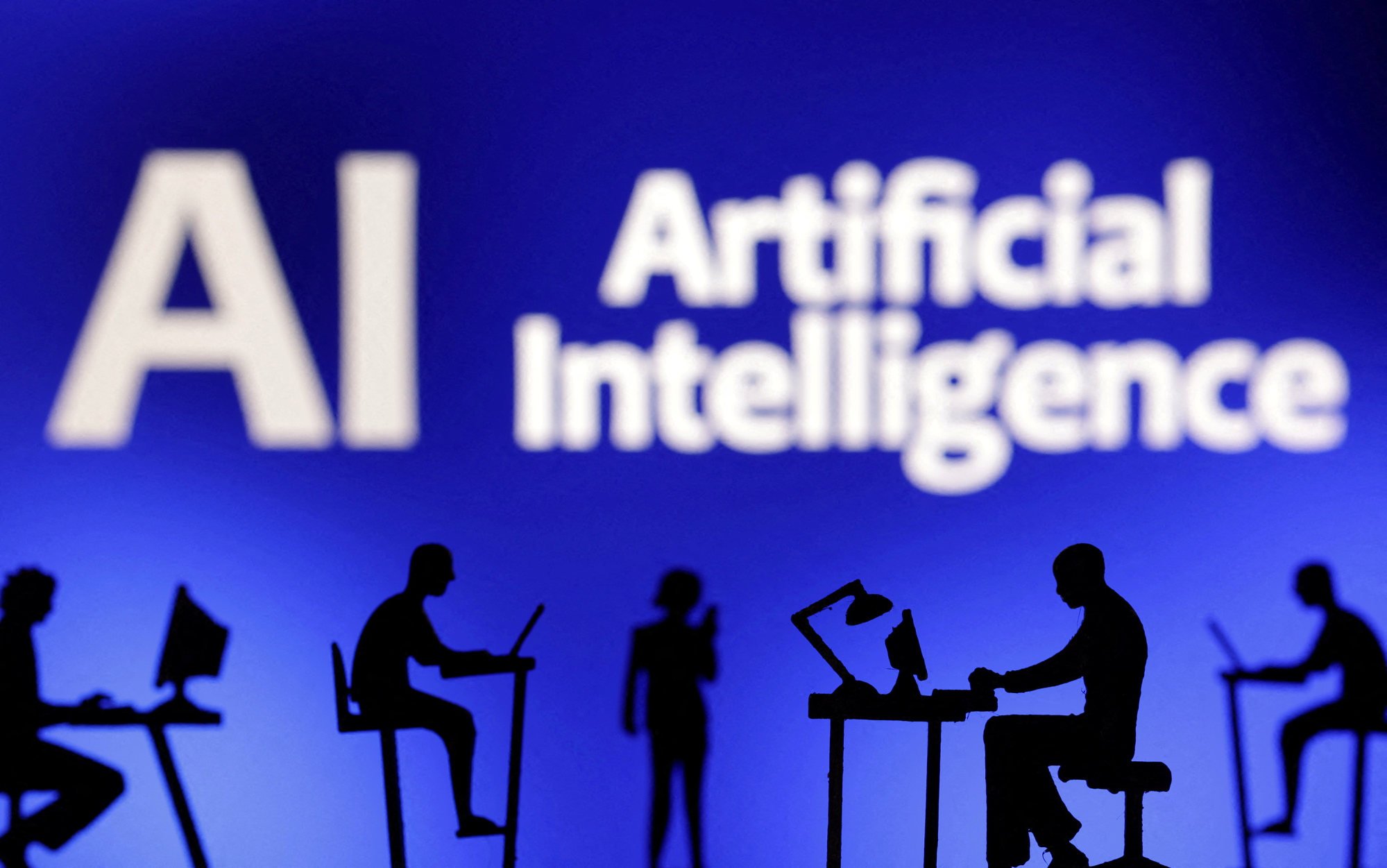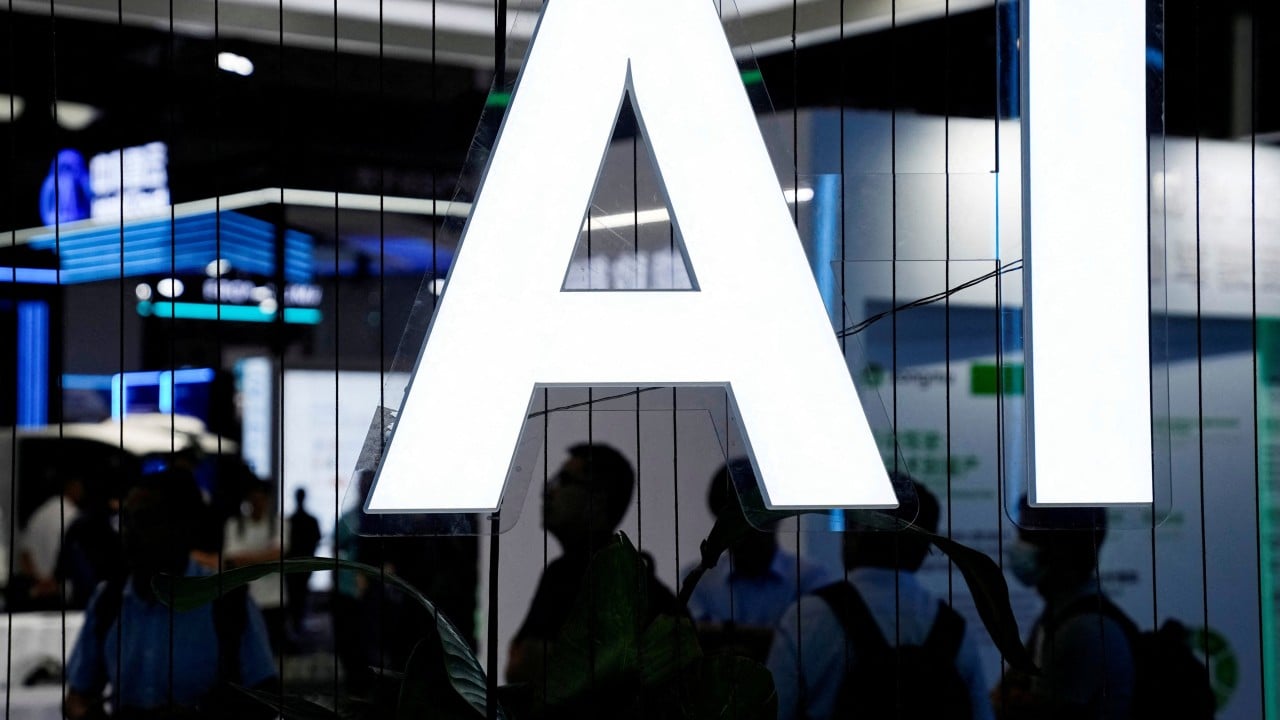Explainer | How can Hong Kong use legislation on AI to foster city as intellectual property trading hub?
The Hong Kong government is canvassing views on ways to boost copyright law to protect artificial intelligence development as part of an effort to make the city a regional intellectual property trading centre.
Authorities said major legislative amendments could not be justified in a consultation document released by the Commerce and Economic Development Bureau on Monday.
But the bureau floated the idea of allowing wider use of copyrighted work in the development and training of AI models.
Here the Post examines the city’s position on how copyright involving AI-generated work should be protected.
1. Are AI-generated works protected by existing law?
The authorities said the Copyright Ordinance is capable of protecting AI-generated work and that the present provisions should be maintained.
The consultation paper said there were two problems linked to the application of the ordinance on AI-generated works, but it did not find it necessary to make substantial amendments to the present framework.
The first problem was how computer-generated work fitted into the originality requirement because of the lack of clear legal precedent.
But the government said resolutions should be shaped by developments in case law, which would allow for a flexible interpretation that could be adapted to technological advancement and changes in creative processes.
Another question that could come up is authorship and ownership of computer-generated works.
The author could be the developer, programmer, trainer of the AI models, system operator, or the users who input prompts to create the works.
But the government said resolutions should be “fact-specific, to be determined on a case-by-case basis” and that there was no hard and fast rule.
It added that contractual arrangements could provide a pragmatic market solution on the question of which party ended up holding the copyright on AI-generated works.

2. How are copyright infringements arising from AI-generated works tackled?
The liability issue of copyright infringements involving AI-generated works is subject to inquiry into the facts and supporting evidence on a case-by-case basis under the current legal framework.
The government said rigid rules that assigned infringement liability to specific individuals, such as owners or end users, across the board could fail to account for the unique factual context of each case and compromise fairness.
“Any arbitrary imposition of excessive onus on AI system owners or users, without due regard to the circumstances of individual cases, will likely hinder AI technology development and undermine efforts to encourage its use,” the document said.
The authorities add the present legal framework was broad enough to tackle infringement cases, and the prevailing market practice of using contractual agreements to address liability matters was a practical approach.
3. Why are specific copyright exceptions needed?
Developing, training or enhancing an AI model using others’ copyright works could constitute copyright infringement under present legislation unless a licence is obtained from the copyright owner or the action falls within the copyright exceptions outlined in the ordinance.
But each exception is confined to certain special situations or purposes, such as research, private study and education, and subject to conditions.
There is no exception for the purposes of computational data analysis and processing, the prevalence of which is increasing in AI technology development.
The government proposed a “text and data mining exception”, which would allow the use of copyrighted work for conventional text and data mining, computational analysis and processing to boost the performance of a computer program.
It also suggested that the exception could be applicable to commercial and non-commercial activities, such as the development of AI models for commercial use and business analytics.
But, to balance the interest of copyright owners, the paper suggested they could be offered an opt-out clause to prevent their works from being used.
The bureau added restrictions could be imposed on the distribution of a copy made under the exception.
Several jurisdictions, including the European Union, Japan, Singapore and the UK have introduced specific copyright exceptions for similar activities through their own laws, although the scope and conditions vary.
4. What about deepfakes?
The unauthorised use or imitation of an individual, through the use of a likeness or voice, do not necessarily constitute infringement because they are not protected by copyright in the first place.
But the government still included the subject in the document and highlighted its importance to understanding the broader implications of generative AI.
It said that legal remedies were already available to tackle the misuse of an individual’s personal characteristics through deepfakes.
When deep fake content also involves the unauthorised use of a work in copyright, legal action can be taken based on infringement of the creator’s rights.
Some non-intellectual property laws may also be applicable, such as the personal data protection legislation, the law of defamation and publication of intimate images.


